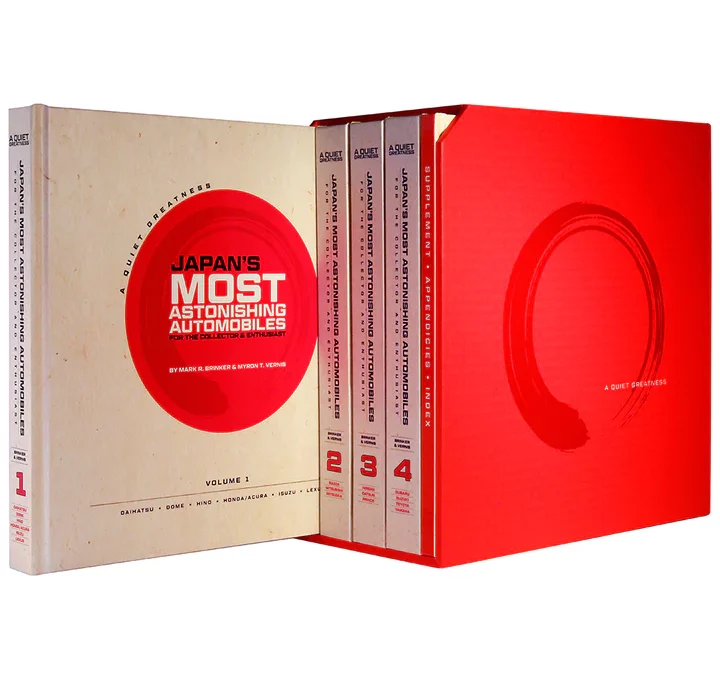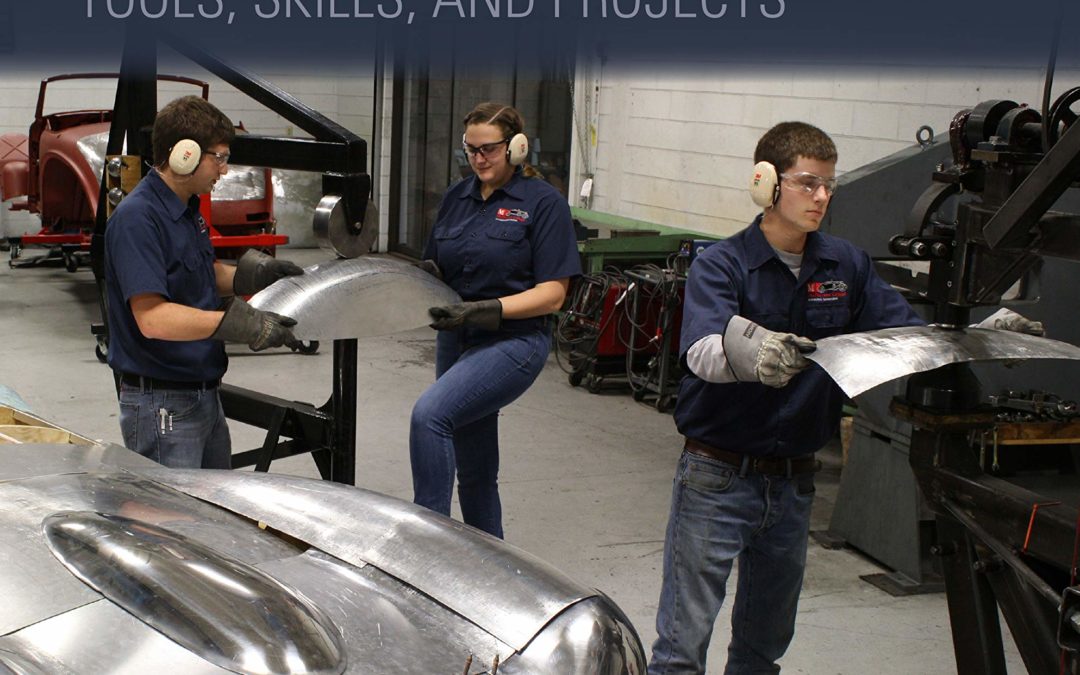
Whether you want to create custom or replacement parts or build an entire automobile body, this metalworking course for gearheads from best-selling automotive restoration author and professor Ed Barr will take you as far as your interests reach. Barr demystifies this seemingly black art with information on tools and basic skills and 14 customizable projects, fully illustrated with step-by-step color photography.
First, you’ll learn how to assemble your ideal toolkit, as well as how to build a power hammer and an English wheel. In the process, Barr will help you make informed choices based on available space and budget. Once you’re all set up, he addresses the concepts of shape and form.
The projects are presented in a way that you can easily apply them to their own vehicles, whatever they may be. Barr also takes the time to show how the projects can be accomplished with different available tools. As you go, you’ll gain the skills and confidence for tackling the increasingly complex cases presented. Work your way up to building a fender utilizing the wheeling machine you built earlier; then move on to building a Model T speedster body and an Indy car, and later a challenging ’â??34 Plymouth fender. The book even includes common “goofs” and how to avoid and, if necessary, correct them.
Written in an engaging and approachable style, Sheet Metal Shaping serves equally well as a useful supplement to Barr’s previous Professional Sheet Metal Fabrication or as a must-have standalone volume for any fabricator’s library.
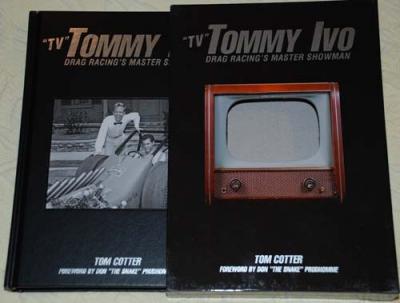
SOLD OUT
“Special Limited edition of 200 very cool TV slipcase books. signed and numbered.
Signed by Tommy Ivo, Don (the Snake) Prudhomme and the author, Tom Cotter.
In the early 1960s, Tommy Ivo had the world in the palm of his hands. Still a young man, he was already a star of television and film with a promising Hollywood future ahead of him. Then his producers told him he had to quit drag racing. He quit the entertainment industry instead.
This is the official story of Ivo’s incredible life and racing career. Readers will follow “TV” Tommy as he becomes the most ambitious drag racer in the nation, building his own cars in the garage behind his Burbank home; becoming the first driver to pilot his dragsters to 170, 175, and 180 miles per hour and towing his cars to match races at small-town drag strips across the United States. Always the showman, Ivo pioneered promotional techniques that are today taken for granted. In this regard especially, his impact on the sport cannot be understated, and his legacy is detailed in this incredible bio of one of drag racing’s most irrepressible characters.
“

Here’s a book about auto racing history with a difference, one that’s written and illustrated to appeal to people of all ages even if they’re not racing fans in the first place. Tommy Saal’s ABC of Auto Racing History is unique in that it’s really two books in one. Book A features cartoons in color with versified captions to be read to or read by kids. The flip side is Book B that explains to young adults, racing neophytes and parents of kids with questions the stories behind B for Bonneville, D for Daytona, I for Indianapolis, L for Le Mans, S for Sebring and so on through the alphabet from A to Z without being too technical.
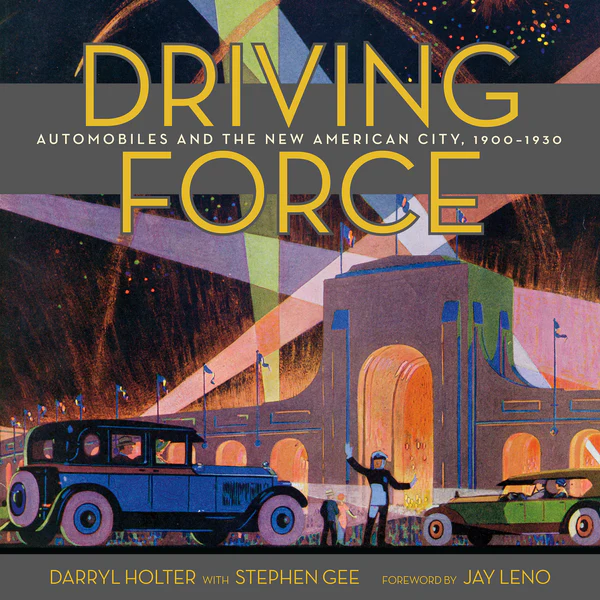
Driving Force: Automobiles and the New American City 1900-1930 (Angel City Press) explores how Los
Angeles’s enigmatic car culture propelled the explosive growth of America’s passion for cars. And with thoroughly researched text and page-after-page of vintage images, it shows how roadblocks that limited the sales of automobiles in the rest of the country, were eliminated in a new-thinking city in the earliest days of the car industry.
At the dawn of the twentieth century, as Los Angeles transformed from a rugged outpost to a booming metropolis, so too did the fledgling automobile simultaneously come of age. Ignited by an unlikely and visionary mix of entrepreneurs who ventured into unknown territory, early adopters broadened the market and convinced the public that cars were no longer a luxury—they were the ultimate modern necessity. From these early enthusiasts, men and women in various business recognized that the automobile would change society and wanted a piece of that action. The city’s auto business emerged initially among bicycle shop owners, carriage retailers, and automobile aficionados who started selling—and repairing!—cars. Their workshops thrived, expanded, and eventually became dealerships, the key component to the auto boom.
In this first major history of dealers at work—and one of the first books to chronicle the early history of cars in Los Angeles—authors Darryl Holter and Stephen Gee share the untold story of pioneering automobile dealers who seized the chance to join a start-up industry that reinvented an American city. Some became wealthy and powerful, others failed. But the lure of the automobile never wavered.
The L.A. dealers helped change the way cars were sold. They championed selling cars on credit while accepting“used cars” that buyers “traded in” so they could buy a new one. They introduced the West Coast to the concept of dealerships with service bays for on-site car repairs; persuaded manufacturers to design cars to their specifications and created custom vehicles and innovations that were copied around the country.
With more than 150 spectacular vintage images—many never before published—Driving Force brings to life the people who made the automobile an icon of the modern American city. In its pages, readers will discover how the story of the automobile is interwoven with Southern California’s unique topography and sun-drenched climate; a new era of women’s rights, and a growing female influence on automobile design; the creation of the Los Angeles Auto Show and the remarkable 1929 fire that threatened to destroy it; and how car dealers launched renowned L.A. radio and television stations, including KNX, KFI, and KCBS-KCAL.
As car collector extraordinaire Jay Leno explains in his Foreword to Driving Force, “Darryl Holter shows that auto retailers connected manufacturers to buyers, changing America and shaping the history, economy, and culture of Los Angeles.”

TWO-BOOK COLLECTOR’S EDITION
The two-book Collector’s Edition of Secret Fords Volume Two follows the same format as the best-selling Collector’s Edition version of Volume One. More inside stories, written in the author’s first-hand words add a personal touch to the Scrapbook. Both books follow the same timeline so that they can be read together or separately. Each copy of Secret Fords Volume Two is personally signed and numbered by the author and the two books supplied in a boxed slipcase with specially-comissioned cover art. The Scrapbook also features a unique cover featuring the mysterious 2000s Scorpio, cancelled CE99 Escort plus alternatives to the Fiesta and Escort.
Two-book boxed set, author-signed and numbered copy of Secret Fords Volume Two, plus supplemental Scrapbook, Boxed slipcase with unique cover art. Two free posters worth £25 folded inside.
Extra Scrapbook content includes Ghia’s rework of an RS2000 into an off-roader, a mysterious large Ford beyond the Scorpio, step-by-step build of a one-off RS2000-based prototype.

As with the other recent books in this series, this Classic study of the Ju 52 offers the most definitive account published in recent years of this bulwark of the Luftwaffe, which first saw military service in the 1930s and was then engaged in operations in the Spanish Civil War through the end of World War II.
The all-metal, three engine Ju 52/3m enjoyed a solid reputation among its crews and the troops and paratroops who used it and depended on it. It is a machine synonymous with the images of the German attacks on Holland and France in 1940 and Crete in 1941 when hundred of “Tante Jus” were used to drop paratroopers to successfully capture key tactical and strategic areas.
The full history, however, goes back much further. Built as a passenger aircraft for Deutsche Lufthansa, the Ju 52 ranges as far as South Africa, Mozambique, India and Latin America, as well being operated by several other European countries such as Belgium, Equador, Peru and Uruguay. Britain operated several Ju 52s.
The aircraft was first blooded in the Spanish Civil War, where it was pressed into service as a crude, but effective, bomber with the Legion Condor. From then on the Luftwaffe deployed it on every battle front in the West, in the Mediterranean and in the East. An example also flew in Iraq. The Ju 52 served as a stalwart transport, often operating in the most hostile conditions, with ice or dust, lifting men, animals, food, supplies, ammunition, mail, and spare parts vital for German military operations, such as the North African supply routes at Demyansk, Stalingrad and also in the Ardennes in 1944. It was also converted into the ambulance and mine-hunting roles, and was adapted as a seaplane. After the war, the Ju 52 flew on as late as the 1980s, testimony to its strength and reliability.
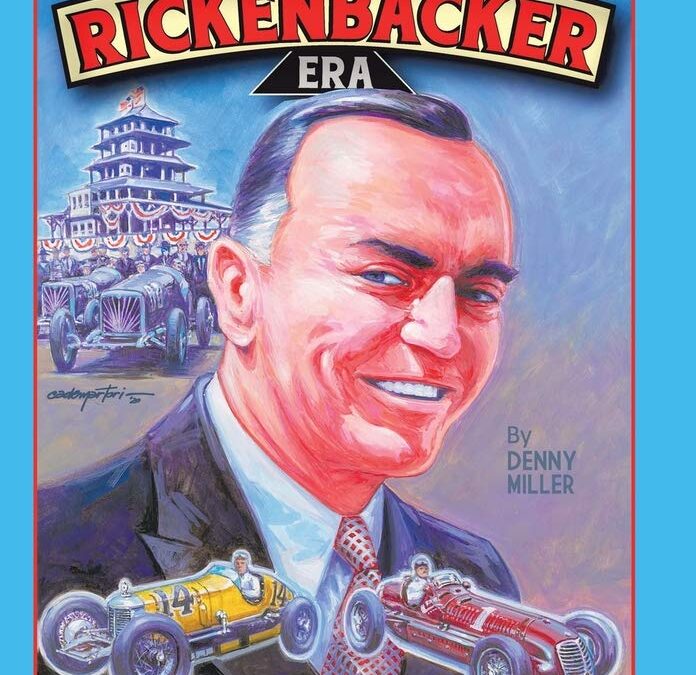
This Eddie Rickenbacker Era book is first and foremost an in-depth look of his ownership of the Indianapolis Motor Speedway from 1927-1945 and not intended to be another biography of Rickenbacker’s life. A list of books of Eddie’s military life or his ordeal about being lost 23 days in the South Pacific, which I highly recommend reading, follows. Throughout the book, I listed key dates and headlines in United States history, in politics, sports and entertainment, that is intended to serve as a point-of-reference timeline throughout the Eddie Rickenbacker Era. Don’t cringe on certain typos-I purposely capitalize the “R” in Race in various places as my way of showing reverence to the Indianapolis 500. Other grammar and punctuation irregularities are my humorous middle finger to those former “composition 101” profs who used so much red ink correcting my themes.
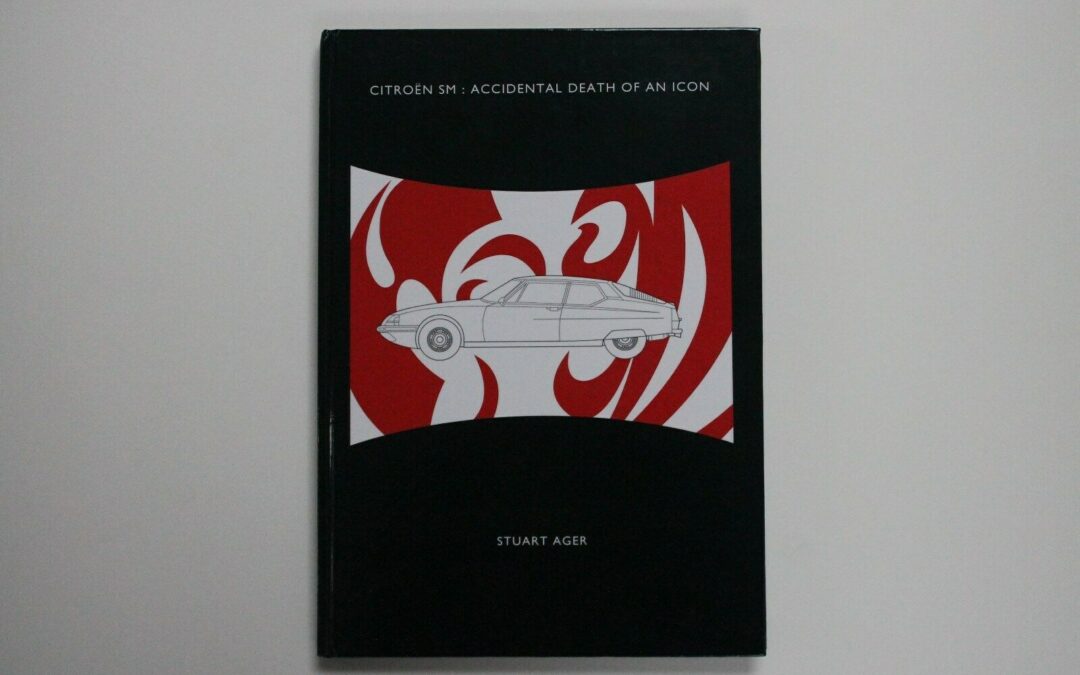
Many books have been written about the Citroen SM, detailing its development, documenting its technological excesses but dodging the circumstances of its demise. How could the most advanced car of its generation be abandoned by its maker, barely four years after its introduction?
Without a satisfactory answer, I began my own investigation. What I uncovered was not at all what I expected. Some of it made me laugh out loud, some of it made me bury my head in my hands with despair, and some of it I found truly shocking. Above all, it was very different from the accepted version of events.”
A book full of original research which sheds new light on what happened to the SM – and what happened to Citroen.
176 pages and richly illustrated in full colour with many specially commissioned images.
Reviewed in Octane Magazine June 2020 by Mark Dixon: “Bonkers but brilliant”
Comments from a few of the first purchasers of the book:
“Bravo! Its awesome”
“It has pride of place on the bookshelf”
“Refreshingly different – superb design & a fascinating read”
“This book is stunning. Well written and my goodness the presentation is brilliant”
“Thank you for the unusual and delightful moments of pleasure whilst reading your book”
“I am so pleased you wrote it. It feels like something that would never have been told otherwise”
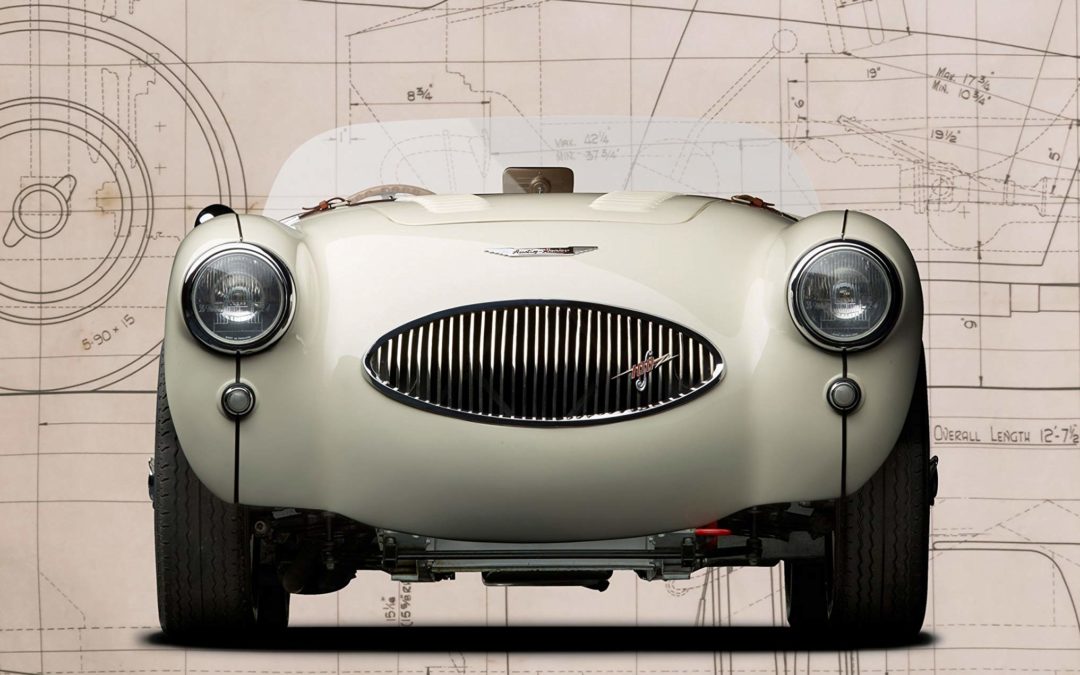
Written in collaboration with Gerry Coker, the designer responsible for the iconic Austin-Healey 100 and Sprite, this extraordinary volume represents the most accurate and complete account of the sports cars built at Warwick, Longbridge, Abingdon and West Bromwich. The author had unprecedented access to Donald and Geoffrey Healey’s private papers, diaries, scrapbooks and photo albums, corporate and financial records from BMC, Donald Healey Motor Company and Healey Automobile Consultants, the files of Jensen Motors and Nash-Kelvinator, dozens of personal interviews and exhaustive research into previously unavailable primary source material. As a result, Healey: The Men and the Machines offers a compelling examination of the true story behind these incredible automobiles and the individuals who created them.
From his early childhood and heroic service as an aviator in the Royal Flying Corps during the First World War, this book provides a comprehensive account of Donald Healey’s motoring career, including competition outings and his involvement with Invicta, Riley and Triumph. The story of the Healey marque’s birth during the darkest days of the Second World War is told through the words of the men involved, revealing the myriad obstacles that faced the small team during a period of strict rationing, limited resources and government meddling.
Fast, elegant and endowed with excellent handling, the early Healey sports cars were among the fastest in the world, acquitting themselves admirably at events such as the Alpine Rally, Mille Miglia and the 24 Hours of Le Mans, but Warwick’s survival was constantly in doubt until the landmark agreement that resulted in the Nash-Healey erased many of small firm’s financial struggles. With access to Nash-Kelvinator’s internal correspondence for the first time, the authors are able to set the record straight about this crucial period in the marque’s history, including the controversial machinations behind the development of the Healey Hundred that made a smash debut at the 1952 London Motor Show.
Lavishly illustrated with previously unpublished photographs, Austin-Healey competition and record-breaking efforts are covered in exquisite fashion, seen through the eyes of legendary names like Rauno Aaltonen, Clive Baker, Paddy Hopkirk, Count Johnny Lurani, Lance Macklin, Timo Mäkinen, Roger Menadue, Don and Erle Morley, Pat and Stirling Moss, Carroll Shelby, John Sprinzel, and Ann and Tommy Wisdom. Equally fascinating are the stories behind the troubled Jensen-Healey and Donald Healey’s attempts to continue building sports cars well into the 1980s, refusing to enter a sedate retirement that would have been so richly deserved.
Destined to become the definitive reference on the subject, Healey: The Men and the Machines includes over 200,000 words, more than 700 detailed footnotes, and eight appendices that cover the competition and record breaking activities of the various models, specifications for every model produced, including the limited production variants, and Donald Healey’s personal musings on racing and sports car design. An instant classic, this is a work certain to inform and entertain enthusiasts of the men and machines that brought the world to its feet at a time when Britain was down on its knees.
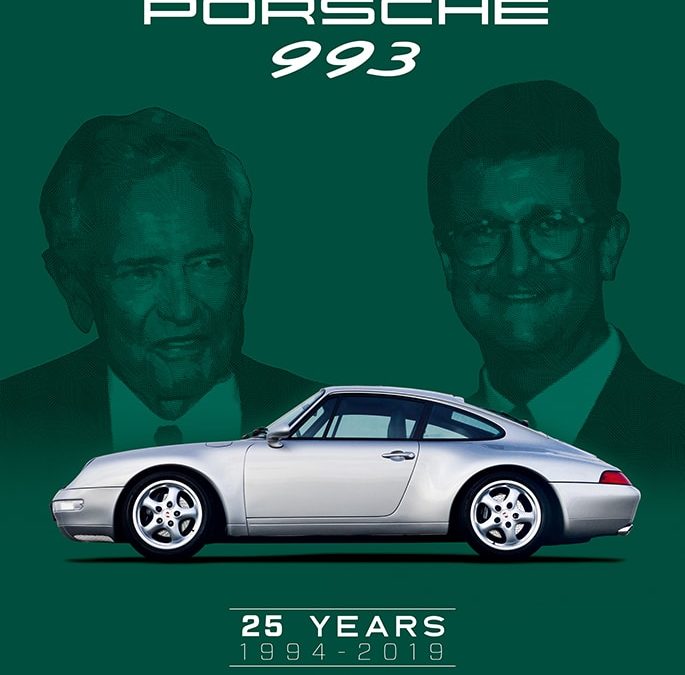
To celebrate the Porsche 993’s twenty fifth anniversary Berlin Motor Books published PORSCHE 993 “25 YEARS” 1994–2019 in a limited edition of 1998 copies.
The last air-cooled 911 really needed to be a success
During the development phase of the Porsche 993, the Zuffenhausen-based company was faring worse in economic terms than ever before. The Porsche 965 and Porsche 989 sports car projects had cost huge amounts of time and money without ever crossing the finish line. Porsche’s reserves were almost exhausted when the global economy tipped into recession in the early 1990s.
A small team created perhaps the most beautiful Porsche 911 ever
911 enthusiasts Bernd Kahnau (project manager) and Tony Hatter (design) were left to their own devices with a small team to realise their vision for the last classic Porsche 911. The result was the most beautiful and intriguing 911 ever. With the introduction of the 993, the production lines in Zuffenhausen were finally running at full capacity once again. On the occasion of the 25th anniversary of the Porsche 993, Tony Hatter and Bernd Kahnau have given extensive interviews, offering detailed insights into the development phase for the first time.
Special features in this book
- Detailed purchasing advice and price trends
- Extensive information about special models
- Unpublished photographs from the historic Porsche archive

These Desired Things, Steve Matchett’s much anticipated fourth book, is a stimulating, philosophical offering; a tour de force in creative writing. Although, defining the book’s genre seems largely superfluous, for its immersive, lyrical text is part fiction, part memoire, part autobiography. Complete with a suitably insightful foreword by Manish Pandey (writer of SENNA – the movie) and with its chapters illustrated throughout by the visually enthralling artwork of Renée French, Matchett’s new book is both engaging and exceptionally pleasing on the eye.The chapters of the work are presented as a collection of eleven short stories: all of them varying in their individual plots, their settings and their style, yet all of them remain essential elements of the whole; for running through each is a series of subtle, uniting threads. And through Matchett’s captivating telling of these affectionate tales, the author’s (already renowned) written ‘voice’ attains a whole other level of intimacy: The reader feels truly bonded to the writer’s emotions.It is also encouraging to note, These Desired Things is no continuation of the author’s previous works: Matchett’s F1 trilogy stands complete. This latest book, therefore, represents a refreshing new mission. Indeed, by introducing to us his pair of delightful (if mysterious) fictional characters, creations so readily brought to life by the author in two of this book’s short stories – The Chestnut Tree and The Shadows Cast of Candlelight – it seems that Matchett is already laying out his plans for a future novel.Undoubtedly, the diversity of all eleven stories – and the inimitable style of the storytelling – is sure to introduce a whole new readership to Matchett’s writing. That said, the author has been most careful to include stories that will appeal to those already familiar with his earlier books – those readers with a knowledge and passion for Formula 1 motor racing. And, most likely, these same passionate readers will be moved to tears on reaching the closing lines of the book’s penultimate chapter, Breaking Bread with Ayrton Senna.Steve Matchett gives abridged readings of this truly atmospheric story during his public appearances, his after-dinner events. Now, however, for the first time in print, this most endearing homage to the fallen, three-time world champion driver, Ayrton Senna, is presented in its full, unabridged form.

n the 1960s, the Cortina was an entirely new type of British car; light yet strong, cheap to buy yet roomy. It established a new class of car: the Cortina Class. Ford’s rivals had to rush to keep up.
Not only was the Cortina the first, it was also the best–a fascinating, ever-evolving project around which Ford-Europe’s planning always revolved.
Here, for the first time in one title, are all the facts, figures, images, and legends of the Cortina story. With over 180 color and black and white photos, this is the fascinating story of an incredibly successful car.
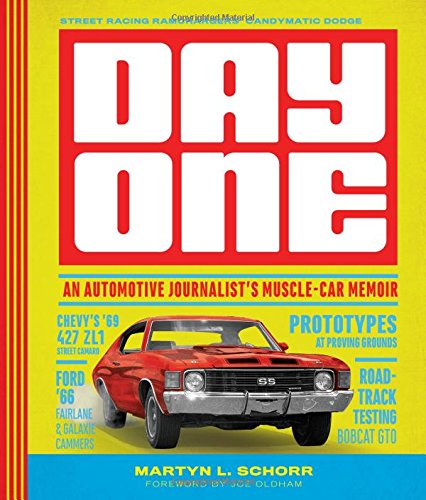
n Day One, automotive journalist Marty Schorr recalls life on the front line in the classic muscle car era, thrashing brand-new cars that would become collector vehicles.
Most muscle-car books celebrate beautifully-restored vehicles surrounded by hard facts; Day One tells the real story from the point-of-view of one of the period’s most respected automotive journalists, Marty Schorr. For the first time in print, you’ll get a unique perspective on what it was like to actually drive, race, and otherwise thrash what are some of today’s most valuable collector cars.
CARS, the iconic magazine Marty wrote and edited didn’t rely on industry advertising for revenue. Instead, the magazine made money the old fashioned way, from newsstand sales, leaving it able to be honest and frank in its coverage of high-performance street cars. CARS magazine reported on both Day stock and modified cars, cars the traditional magazines wouldn’t touch, like the ultra-high-performance vehicles from companies like Baldwin-Motion, Yenko Chevrolet, Nickey Chevrolet, Royal Pontiac, and Tasca Ford.
Prepare yourself for Day One to cover the most important cars of a given year, including:
- Pontiac’s 1962-1963 lightweight Super-Duty 421 street and Swiss Cheese models
- Chevrolet’s 1963 big-block 427 Mystery Motor and ZL-1 Impala.
- Ford 1963 ½ 427/425 Galaxie fastback
- The 1964 Ramchargers
- The first 426 Street Hemi
- Cotton-Owens prepared Hemi Coronet
- A 1966 Olds Twin-Engined (850 cubic inches) Grant Toronado, currently owned by Jay Leno
- A prototype 1966 Plymouth 426 Street Hemi Satellite
- One of two 427 SOHC Galaxies prototypes
- A ’67 Royal Bobcat GTO
- Plymouth’s original ’68 Hemi Road Runner
- Hurst-built Plymouth & Dodge 1968 Hemi-Darts and Hemi-Cudas

In the early 1960s, Lee Iacocca–then director of the Ford division at Ford Motor Company–convinced Henry Ford II to produce a sporty four-seat car aimed at the emerging youth market. That car, essentially a reconfigured and re-skinned Falcon economy car, became the Ford Mustang, and it changed the automotive world like no other car before or since.
In Ford Mustang: America’s Original Pony Car, acclaimed Mustang writer Donald Farr celebrates this unbroken lineage of muscle. He chronicles the car’s phenomenal first-year sales, the new pony car category it pioneered, and subsequent models that include the Mustang GT, Shelby GT350, Shelby GT500, Super Cobra Jet, Boss 302, and Boss 429 – all part of a line of American performance cars that continues to this day.
Created in cooperation with Ford Motor Company and featuring some 400 photos from its historic and media archives, Ford Mustang is a must on the bookshelf of any muscle car or Ford aficionado
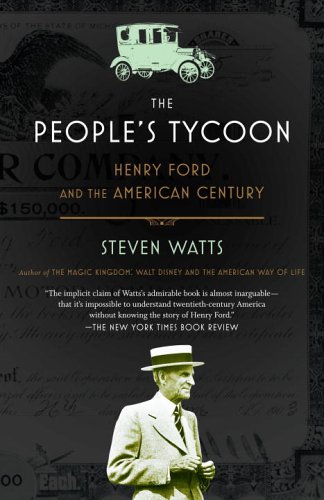
How a Michigan farm boy became the richest man in America is a classic, almost mythic tale, but never before has Henry Ford s outsized genius been brought to life so vividly as it is in this engaging and superbly researched biography.
The real Henry Ford was a tangle of contradictions. He set off the consumer revolution by producing a car affordable to the masses, all the while lamenting the moral toll exacted by consumerism. He believed in giving his workers a living wage, though he was entirely opposed to union labor. He had a warm and loving relationship with his wife, but sired a son with another woman. A rabid anti-Semite, he nonetheless embraced African American workers in the era of Jim Crow.
Uncovering the man behind the myth, situating his achievements and their attendant controversies firmly within the context of early twentieth-century America, Watts has given us a comprehensive, illuminating, and fascinating biography of one of America s first mass-culture celebrities.”

THE BEST OF MOTOR RACING FICTION: 1950-2000. Sixteen short stories and excerpts from the best automotive racing fiction written between 1950 and 2000. IF HEMINGWAY HAD WRITTEN A RACING NOVEL provides behind the scene accounts of the action, adventure and romance ’round the track. Richard Nisley has brought together, in a single book, the most significant automotive writers of the 20th century, for a raucous ride to the checkered flag. Amazon reviewer W. Barker says: RICH NISLEY’S IF HEMINGWAY HAD WRITTEN A RACING NOVEL is a first-class collection of motor racing fiction. Each of these stories, excerpts of course, made me feel like the proverbial kid in the candy store with nose to glass. This is a very well thought out gathering of stories that will inspire you to delve into these great books and enjoy well written novels about racing drivers, cars, and series from around the globe, literally Grands Prix to small-town circle tracks. Mine is a glowing review of Nisley’s excellent collection because the book deserves it. He has done much more than organize a wonderful anthology; he has reawakened avid motor racing readers like myself to a largely untapped treasure chest of great motor racing stories. My encouragement to any reader is don’t miss this racing book. You will not be disappointed. And don’t miss his novel, THE RAGGED EDGE.

“””I am no helmeted, begoggled hero of the skies; picture me bookish, bespectacled, unable to hold even a teacup without rattling it. As a pilot, I am merely an amateur, and I know it. . . . I shouldn’t be talking. But I can’t help talking. For you take the air: the thin, substanceless air that can be made to bear a man; you take America; and you take an airplane, which of all the works of man is the nearest to a living being—you take those things and mix them up, and they will act as a drug which will knock all proper reticence right out of you. And so, here I go talking . . .””—from America from the Air In 1927, Charles Lindbergh made his historic solo flight across the Atlantic; Amelia Earhart became the first woman to do so in 1932. And so was born the golden age of flying. Aviators became the era’s new heroes and the airplane its icon. In early 1930s Chicago, a German-born graduate student became fascinated by the airplane and its usefulness as a great geographic and sociological tool. Wolfgang Langewiesche sold his car and used his meager salary to pay for flying lessons at 25 cents a minute. With the same passion America had taken to the road a decade earlier, Langewiesche took to the air. He eagerly inhaled the landscape and breathed observations about the country, writing a series of books that describe the heady excitement and freedom of flight and the stunning views of his adopted country from an entirely new vantage point—the sky. This new edited volume revives the writings from two of his now out-of-print books. America from the Air draws from Langewiesche’s classic account of his early experiences as a pilot, I’ll Take the High Road (first published in 1939 and praised by the New York Times as “”a stirring and revealing story, told with sensitiveness and lucidity and with the warmth of a modest personal charm””), and selections from his 1951 memoir, A Flier’s World, to create a distinctive book that provides a pioneering look at the American landscape as seen from the cockpit of a light plane. Langewiesche’s photographs from his cross-country flights circa 1939 evoke the era. Wolfgang Langewiesche is revered among pilots for his 1944 flying primer, Stick and Rudder, currently in its seventieth printing. Considered the bible of aviation, it tells us the “”how”” of flying; America from the Air tells us the “”why.”” Here his descriptions of the country offer unique perspectives on New England, the Midwest, and the Atlantic Coast from Virginia to Key West, at a time before the country was paved over by multilane expressways, suburban tract housing, and strip malls. His bird’s-eye view of America takes in small farms, deserted seashores, busy railway lines, and cities in which skyscrapers were still engineering marvels. With the keen eye of a surveyor and an uncommon talent for conveying the physical sensation of flying, he describes landscape in all its beauty and detail as it rolls out beneath him, unveiling its mysteries. Langewiesche is revealed here as an infectiously enthusiastic aviator and an unrivaled observer of the American landscape. In a new foreword, Langewiesche’s son, writer William Langewiesche, describes his father’s love of the view from above. Hokanson and Kratz’s introduction and biography update the reader, incorporating stories gleaned from recent interviews with the author.
”






